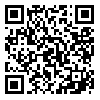BibTeX | RIS | EndNote | Medlars | ProCite | Reference Manager | RefWorks
Send citation to:
URL: http://jamlu.liau.ac.ir/article-1-2269-en.html
In wireless networks, Quality of Service (QoS) emerges as a pivotal concern. The allocation of resources and channels to users plays a crucial role in directly impacting the quality of service extended to them. The identification of the most suitable channel allocation and scheduling strategy, guided by objectives like enhancing throughput, minimizing data latency, and enhancing QoS, poses a significant challenge. The simultaneous attainment of these goals is often hindered by their inherently conflicting nature. Upholding quality standards necessitates the assurance of a minimum bandwidth or user transmission rate, which may, in turn, lead to a trade-off with reduced network throughput. This paper introduces an innovative methodology aimed at upholding service quality while preserving network throughput. The problem of channel allocation and scheduling is articulated to achieve fair maximum-minimum allocation, thereby ensuring an impartial distribution of resources among users. Additionally, an efficient algorithm named RAMMF (Resource Allocation with Max-Min Fairness) is presented to tackle this issue. Through analytical and numerical analyses, it is evident that the RAMMF algorithm surpasses existing resource allocation mechanisms in striking a desirable equilibrium between QoS assurances and overall network throughput.
Received: 2024/06/8 | Accepted: 2024/12/5 | Published: 2025/03/21
| Rights and permissions | |
 |
This work is licensed under a Creative Commons Attribution-NonCommercial 4.0 International License. |






